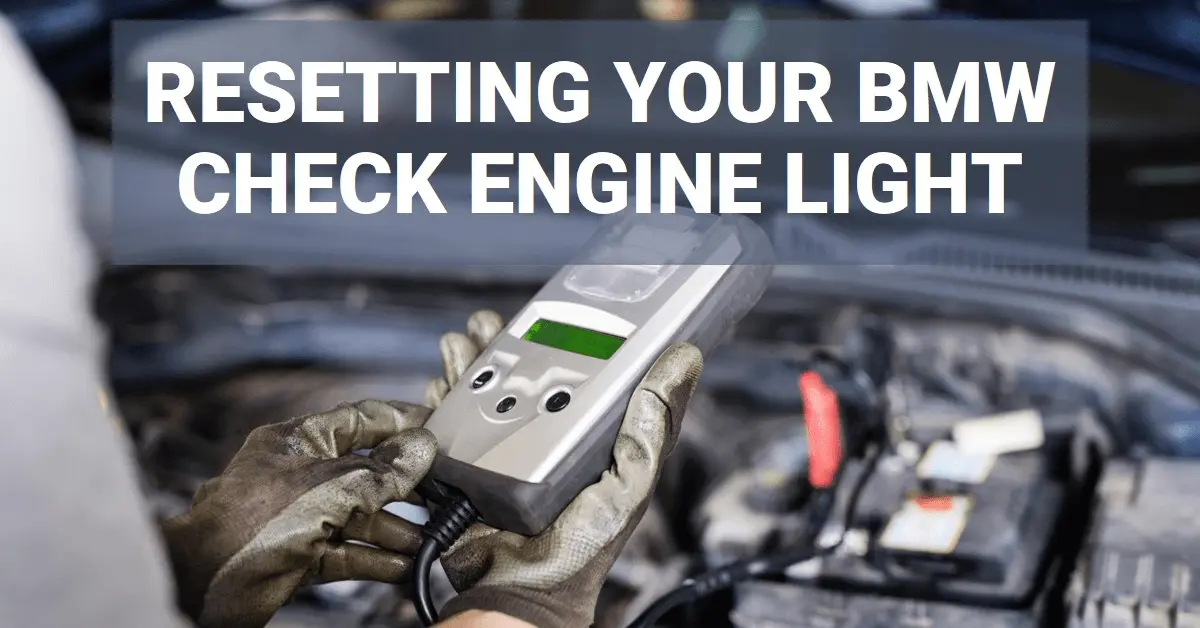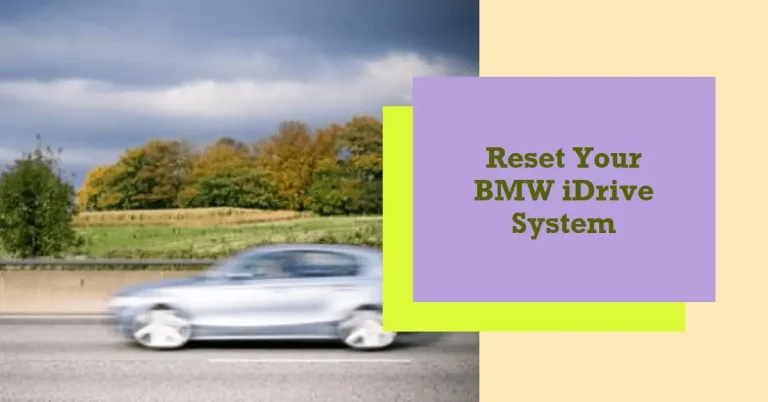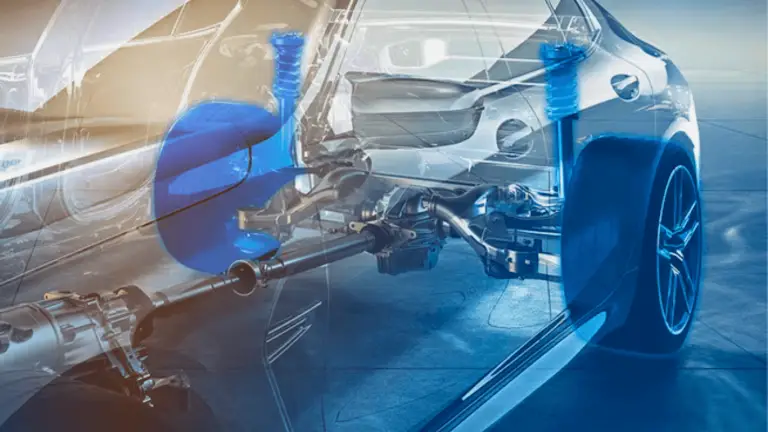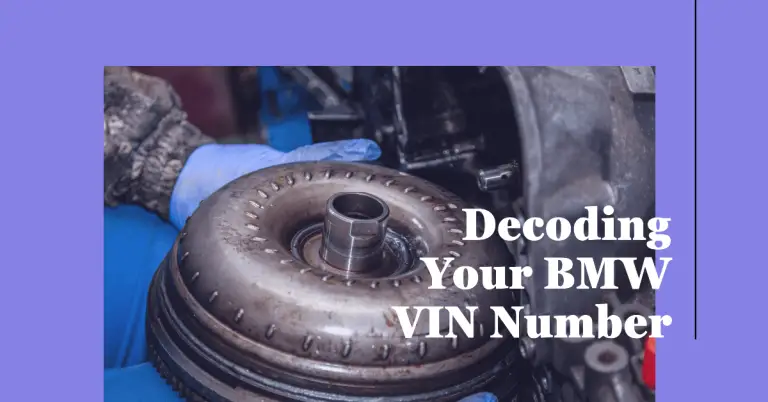How to Reset a BMW Check Engine Light Without a Scanner?
Finding that glowing orange check engine light lit up on your BMW’s dashboard can give any driver a sense of dread. That ominous illumination means something is amiss under the hood—but what? And how serious is it?
You may be tempted to simply reset the BMW check engine light and be on your merry way. However, ignoring the light can lead to further damage down the road. Resetting it without addressing the underlying problem just masks issues and doesn’t fix them.
In this detailed guide, we’ll cover everything you need to know about resetting a BMW check engine light without a scanner tool:
- Common causes of the check engine light
- When a reset is appropriate and safe
- Step-by-step instructions to manually reset the light
- What to do if the light comes back on after resetting
- FAQs on emissions tests, driving with the light on, and more!
By the end of this article, you’ll have a full understanding of how to safely and effectively reset that pesky check engine light in your BMW without a scanner tool. Let’s get started!
When Should You Reset Your BMW Check Engine Light?
Before attempting to reset your BMW check engine light, it’s important to understand what caused it to come on in the first place.
The check engine light is triggered by your BMW’s onboard diagnostics system (OBD) when it detects an issue with the powertrain, emissions system, ignition system, fuel system, or other key components.
Pro tip: Many BMW models use a condition-based servicing system. So if the underlying problem is fixed, the check engine light will turn off on its own after several drive cycles without needing a manual reset.
So when is it appropriate to do a manual reset of the dreaded check engine light? Here are a few scenarios:
- You diagnosed and repaired the problem – If you were able to pinpoint the issue through scans or mechanical troubleshooting, and complete the repair, a manual reset may be needed if the light persists.
- The light came on erroneously – In some rare cases, you may find the check engine light illluminates erroneously, with no code or issue found. Disconnecting the battery can clear these phantom CELs.
- You need to pass an emissions test – In areas with emissions testing required, you may need to manually reset the light to pass inspection, if you’ve fixed the underlying issue causing the code.
But the golden rule remains: never reset the light unless the problem is solved first. Ignoring codes and resetting prematurely will only lead to headaches down the road.
What Causes the Check Engine Light to Come On?
BMWs have complex, computer-controlled systems under the hood. Many things can trigger that check engine light to ruin your day. Here are some of the most common:
- Loose or damaged gas cap – A loose gas cap allowing vapors to escape can trigger the light. Replacing a faulty cap often solves this.
- Oxygen sensor problems – The oxygen sensors monitor exhaust gases. When they go bad, it changes engine performance and lights up the CEL.
- Mass airflow issues – The MAF sensor monitors incoming air. Contamination or failure sets off the light.
- Faulty spark plugs/wires – These ignition system components are essential. Faults will cause misfires and the light.
- Catalytic converter failure – The catalytic converter neutralizes exhaust. A clogged or failed cat often illuminates the light.
- Vacuum leaks – Small leaks in vacuum lines make the engine run poorly, triggering the light.
There are many other issues like transmission problems, bad coils, and failing PCV valves that could also turn on the CEL. Proper diagnosis of the specific trouble code is key before attempting to reset the light.
How to Reset BMW Check Engine Light Without a Scanner
Armed with the knowledge of what causes the check engine light to come on and when it’s appropriate to reset it, let’s get into the steps of manually resetting it without a scanner:
Method 1: Disconnect the Battery
Resetting BMW check engine light by disconnecting the battery is one of the oldest tricks in the book. It works well for intermittent or erroneous codes. Here’s how:
- Safely stop the engine and remove the key from the ignition.
- Pop the hood and locate the battery. Trace the negative (black) cable to the terminal on the battery.
- Using a wrench, loosen the bolt holding the cable clamp.
- Disconnect the cable from the negative terminal. Keep the cable away for at least 60 seconds.
- Reconnect the negative battery cable, tighten the clamp bolt, and close the hood.
- Turn the key to ignition but don’t start the engine. Look for the check engine light – it should stay off.
- Start the engine and verify the light stays off. You may need to drive 20-40 miles to trigger monitors to reset.
Keep in mind: Disconnecting the battery also resets the BMW computer and may clear radio presets, clock settings, and mileage logs. It’s also essential to reset any customized control module settings afterward.
Method 2: Turn the Ignition On and Off
Cycling the ignition three times can also clear intermittent check engine light issues:
- Turn the key to ignition but don’t start the engine. Pause for 10 seconds.
- Switch it off and wait another 10 seconds.
- Repeat this on-off sequence two more times for a total of 3 cycles.
- Start the engine and check that the light stays off.
This forces the BMW computer to do a soft reset and may clear up phantom CELs. As with the battery disconnect, you may need to drive up to 40 miles to complete drive cycles for monitors.
Method 3: Loosen Battery Terminals
A third way to reset your check engine light without a scanner is by loosening the battery terminals. The effect is similar to full battery disconnection. Follow these precautions:
- Remove key from ignition and pop the hood. Locate the battery terminals.
- Put on insulating gloves and eye protection – safety first!
- Using a wrench, loosen the bolts holding the terminal clamps enough so they can be wiggled lose.
- Carefully separate the terminals from the battery posts.
- Touch the positive and negative terminals together for a second to discharge residual power.
- Reconnect the terminals tightly and coat with dielectric grease to prevent corrosion.
- Check that the light stays off after starting the engine.
This “poor man’s disconnect” works to force a battery reset. Make sure to check all electronic systems afterward since the BMW computer, radio, and other settings may default back to factory spec.
When Should You Use a Scan Tool Instead to Reset Check Engine Light?
While the manual methods using just the battery and ignition cycles are helpful in a pinch, the most reliable way to reset the BMW check engine light is using an OBD2 scanner tool.
Scanner tools range from basic code readers that just check and clear CELs to advanced professional-grade diagnostic platforms. Basic OBD2 scanners can be purchased affordably online or at auto parts stores. Higher-end professional BMW scanners cost more but unlock enhanced capabilities.
Resetting the light after making repairs using a scanner is advantageous because it:
- Confirms the code(s) that caused the light to come on
- Verifies if any codes remain after the repair procedure
- Allows you to reset and turn off the light with the press of a button
- Monitors “soft faults” that don’t trigger the CEL
Using a scanner also eliminates the need to complete full drive cycles to reset monitors since it communicates directly with the BMW computer.
So while manually resetting the light works, for the most thorough process, a quality OBD2 scanner tool is recommended. Consult our service center to determine the best scanner for your BMW model.
What to Do If the Check Engine Light Returns
You followed the steps to reset your BMW check engine light—but it came back on! Now what?
Seeing the pesky CEL return after a reset procedure means the problem triggering it likely was not fully resolved. Here are some tips:
- Recheck any repairs – Review the original code(s) and troubleshooting steps. Verify repairs were done properly.
- See a professional – At this point it’s best to have your BMW serviced by a certified tech to properly diagnose the issue.
- Don’t keep resetting it – Repeatedly resetting the light without diagnosing the root problem will only lead to bigger headaches down the road.
- Act quickly to avoid damage – Driving with the check engine light blinking or solidly on can cause further damage from issues like catalyst meltdown or engine misfires.
Ignoring the light is never advised. Contact our service department to schedule an appointment as soon as possible if it returns after resetting. Our techs have the high-quality BMW scanner tools and training to accurately diagnose and repair any issues.
Frequently Asked Questions About Resetting BMW Check Engine Light Without Scanner
Here are answers to some common FAQs about resetting that pesky check engine light without a scanner:
Will my BMW pass emissions inspection with the check engine light on?
Most likely not. For states with emissions testing programs, a lit CEL is an automatic inspection failure. Some states allow one or two “monitors not ready” if repairs are recent. Check your local laws.
Is it safe to drive with the check engine light on in my BMW?
Generally no, driving with the CEL illuminated continuously is not recommended and may cause additional damage. However, intermittent blinking for a short period may not be an emergency. Use your best judgement and consult a technician.
How many miles can you drive with check engine light on BMW?
It’s best not to drive more than 25-50 miles with the CEL solidly on. Long drives can lead to overheating, poor performance, and excess emissions. Schedule service ASAP after seeing a steady illuminated check engine light.
Does BMW check engine light come on for oil change?
No, the check engine light is only activated by the OBD system detecting faults related to the powertrain, ignition system, emissions, or other monitored components and sensors. BMWs have separate maintenance reminder lights for oil changes and inspections.
What should you do when your BMW check engine light flashes?
A blinking CEL on your BMW demands immediate attention. Flashing indicates a severe misfire which could damage your catalytic converter. Stop driving the vehicle and call for roadside assistance or a tow.
Conclusion
Seeing any warning light in your BMW’s instrument cluster is always cause for concern. And while you may be tempted to simply reset the check engine light when it rears its ugly head, understand why it’s on in the first place.
Resetting the CEL without properly diagnosing and fixing underlying issues first is never advised. Use the manual battery disconnect, ignition cycling, or scanner tool resetting procedures outlined here carefully and only when appropriate.
If the light returns after you reset it, have your BMW serviced immediately to prevent further problems. Our expert techs have the skills and advanced tools to correctly trace any check engine light cause and get you safely back on the road.







